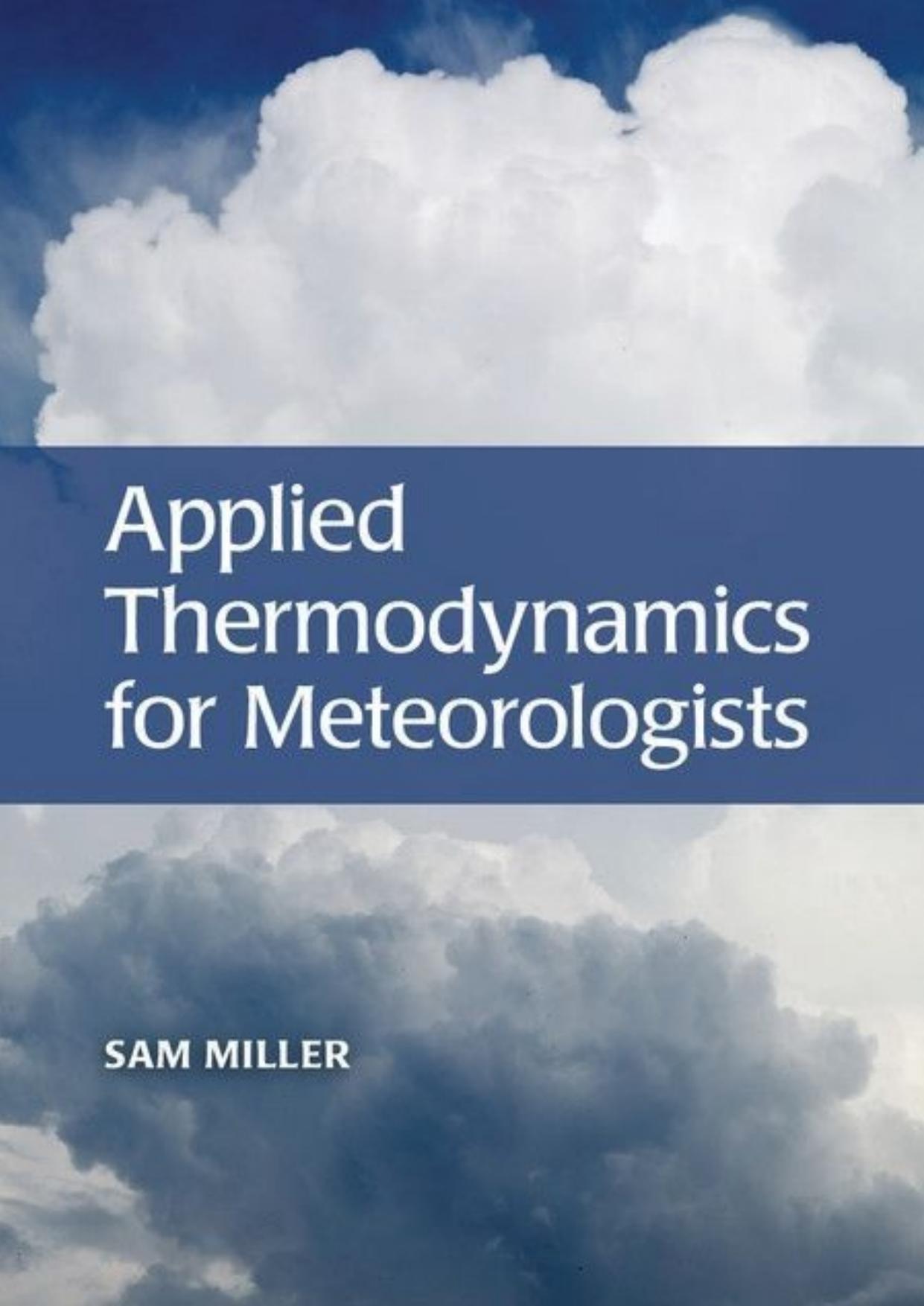Applied Thermodynamics for Meteorologists by Sam Miller

Author:Sam Miller [Miller, Sam]
Language: eng
Format: epub, pdf
Publisher: Cambridge University Press
Published: 2015-06-29T23:00:00+00:00
where m is the mass of the object [kg], g is the effective gravity acting on it [m/s2], and zi is the (initial) altitude of the object before it’s dropped [m]. The LHS of (9.22) is kinetic energy, and the RHS is the potential energy of position in a gravitational field. Canceling the mass on both sides of (9.22) and solving for final velocity results in:
(9.23)
We have seen that g varies by about 1 percent from pole to equator, which means that the final velocity of an object dropped from a fixed altitude would vary as a function of latitude. A straightforward example will illustrate this very nicely. Let’s assume we are at latitude 45° and elevation 10 km. To compute vf using (9.23), we need a representative value of g, which can be estimated using Table 9.1. To begin, let’s estimate the value of g at the surface by taking the arithmetic mean of g at 40 and 50°:
(9.24a)
Download
Applied Thermodynamics for Meteorologists by Sam Miller.pdf
This site does not store any files on its server. We only index and link to content provided by other sites. Please contact the content providers to delete copyright contents if any and email us, we'll remove relevant links or contents immediately.
How to Do Nothing by Jenny Odell(3268)
A Forest Journey by John Perlin(3044)
The Plant Messiah by Carlos Magdalena(2901)
Babylon's Ark by Lawrence Anthony(2650)
The ESV Study Bible by Crossway Bibles(2531)
Energy Myths and Realities by Vaclav Smil(2464)
Fatal Storm by Rob Mundle(2196)
Abbey in America by Murray John A(2063)
Witness Tree by Lynda V. Mapes(1908)
Brokeback Mountain by Annie Proulx(1808)
Client Earth by James Thornton(1754)
Shadows on the Gulf by Rowan Jacobsen(1732)
Coming Back to Life by Joanna Macy(1701)
Cosmos by Carl Sagan(1697)
Mycelium Running: How Mushrooms Can Help Save the World by Paul Stamets(1661)
Water Rights and the Environment in the United States by John Burch(1659)
Ten Billion by Stephen Emmott(1635)
The overachievers by Robbins Alexandra(1553)
Ecological Intelligence by Daniel Goleman(1548)
